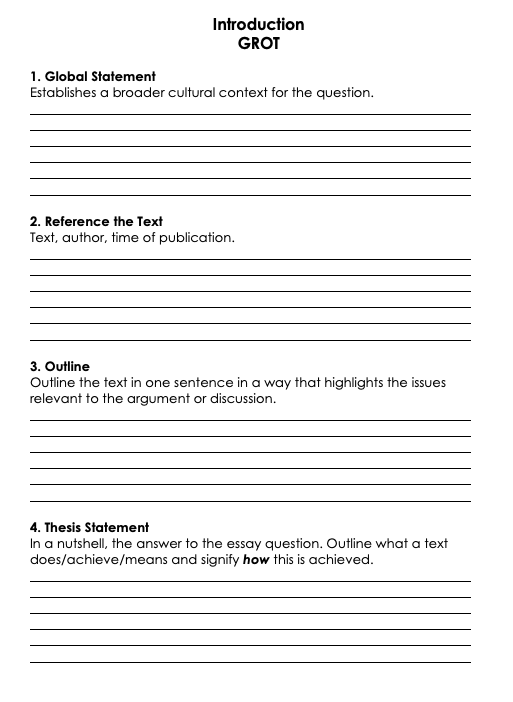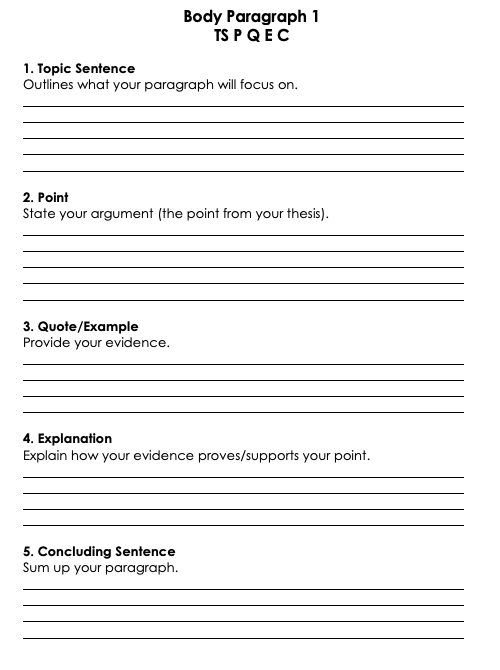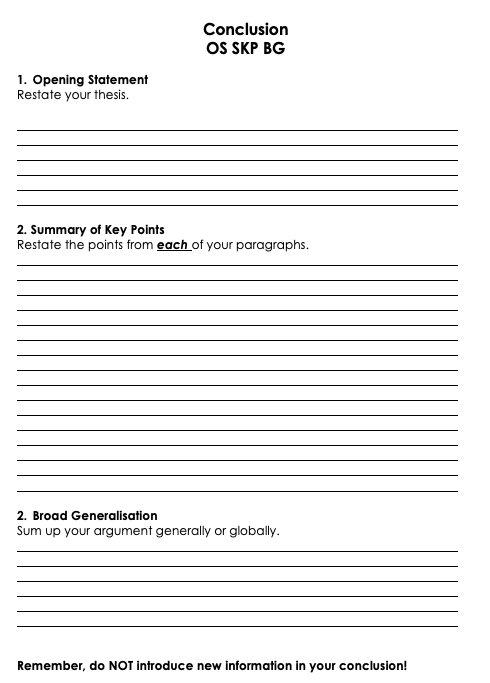The Situation
- Students need to learn the essay structure.
- Students need to write an essay.
The Solution
Below I have outlined an essay structure. This section does not explain how to teach essay writing, but demonstrate a template that you might like to use along with identify minor nuances with implementing the document (For example, what each section of the essay should include).
Introduction
In this section of the essay plan, provide students with an outline of what they need to record in each sentence. In the introduction, provide students with the following acronym (Global Statement, Reference to Text, Outline, Thesis Statement).
Global Statements provide broad information to the reader about what the topic is about. For a persuasive essay, it might be designed to provide an emotional hook, while analytical essays may use historical/essay context to frame the essay. The Outline of the text can provide further context to the narrative and author.
A thesis statement should be written as the following:
TOPIC + FOCUS + REASONS WHY = THESIS STATEMENT
- The TOPIC is the name of the text.
- The FOCUS is the way the generic conventions are utilised.
- The REASONS WHY is the evidence provided.
For example:
In the documentary, Social Media Fatigue (TOPIC), framing has been used to encourage the audience to feel (FOCUS) sympathy towards John.
Students then provide evidence to support the thesis statement above (REASONS WHY).

Body Paragraphs
For a five paragraph essay, there are three body paragraphs outlining the central argument of the essay.
Students outline the topic sentence, evidence, explanation and linking/concluding sentence to present their argument. I would recommend that they use a retrieval chart to assist with gathering evidence for this section. Once the retrieval chart is complete, much of the essay is written. Here are some small caveats when writing the body paragraph:
- For an analytical essay, students need to make a direct statement that calls back to the thesis statement.
- For a persuasive essay, students need to hook their reader in using persuasive techniques.
- The point of this paragraph should provide additional context to the reader about the topic sentence.
- When writing quotes, students need to use direct quotes from the text and use quotation marks.
- When providing explanations, students need to provide detailed analysis on the word choice, reader response and the authors intentions to the text.
- With the concluding statement, generally students wrap up the paragraph, while making minor connections to the next body paragraph.

Conclusions
The concluding paragraph restates the thesis statement and summarises key information outlined in the essay. New information should not be introduced and students need to offer a recommendation or sum up the argument addressed. Ultimately, what understanding do you want the reader to walk away with?

One thought on “Teaching…Essay Structure”